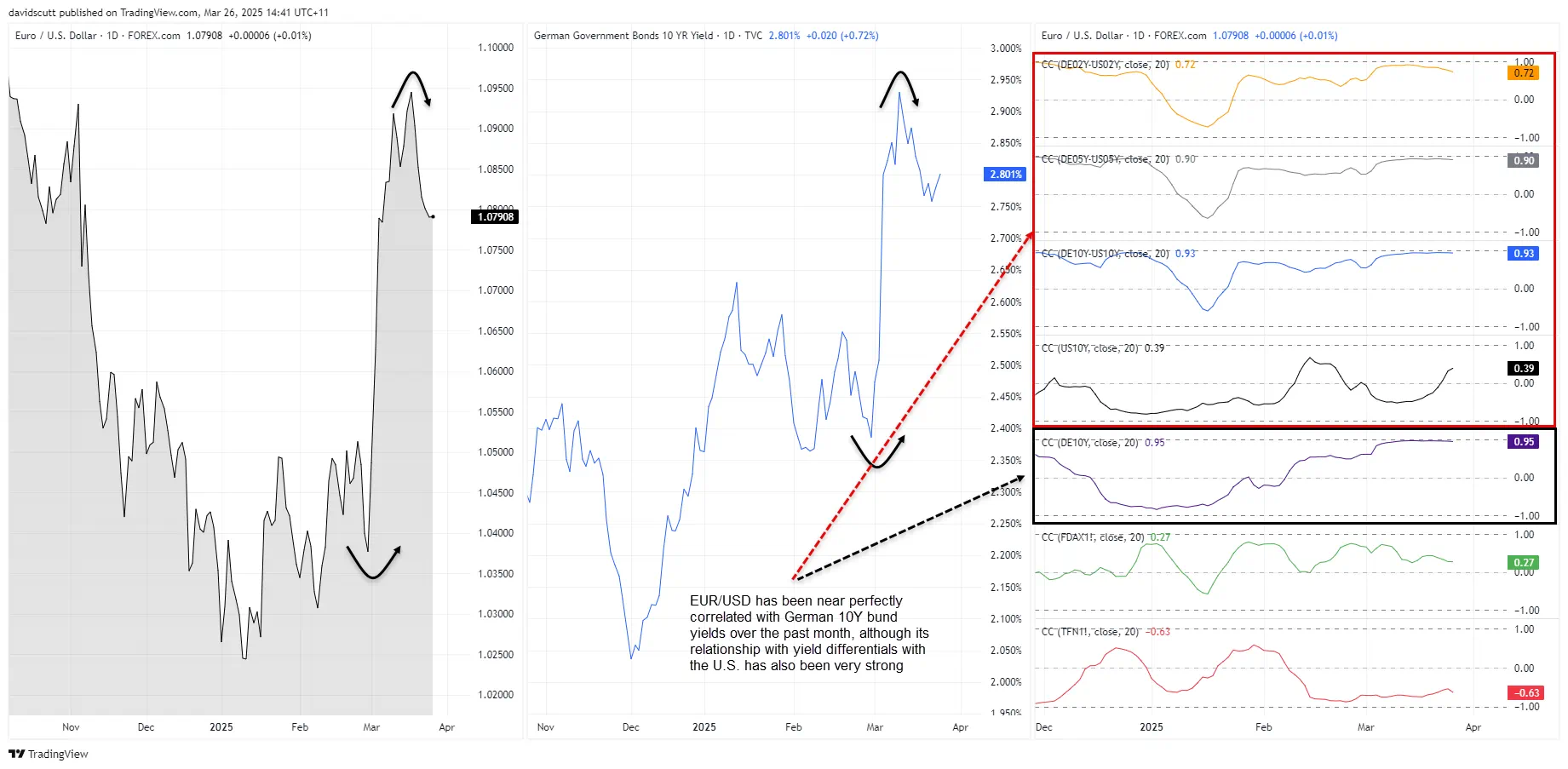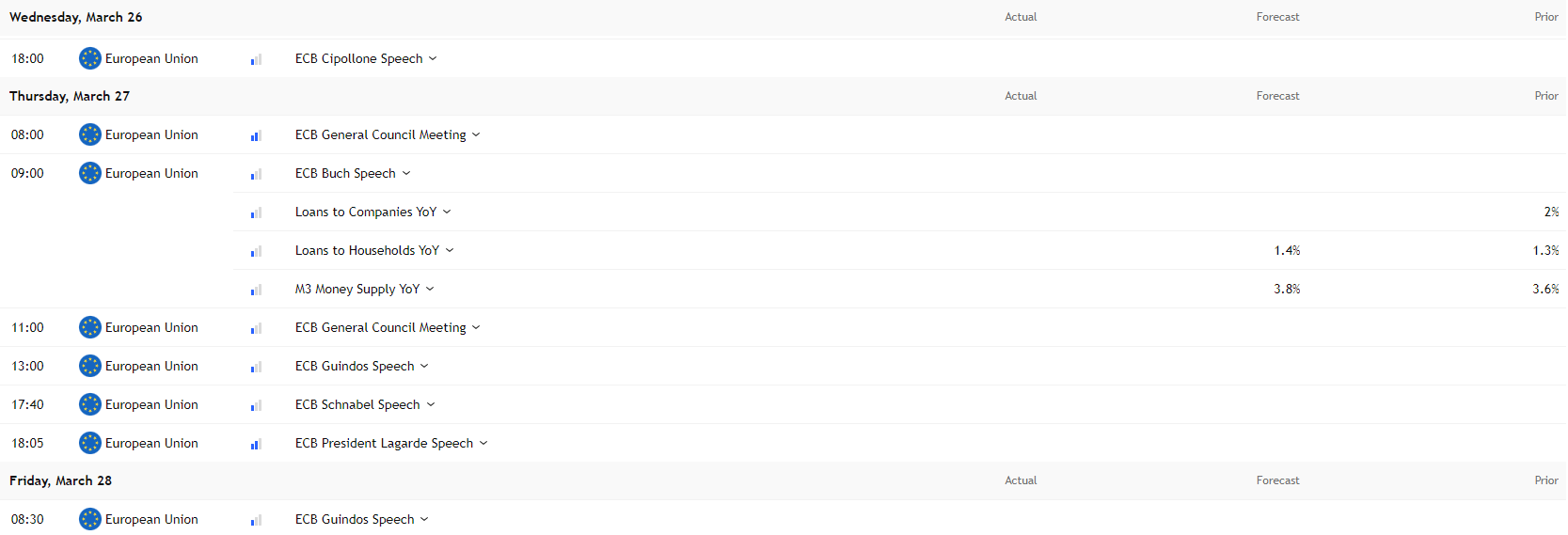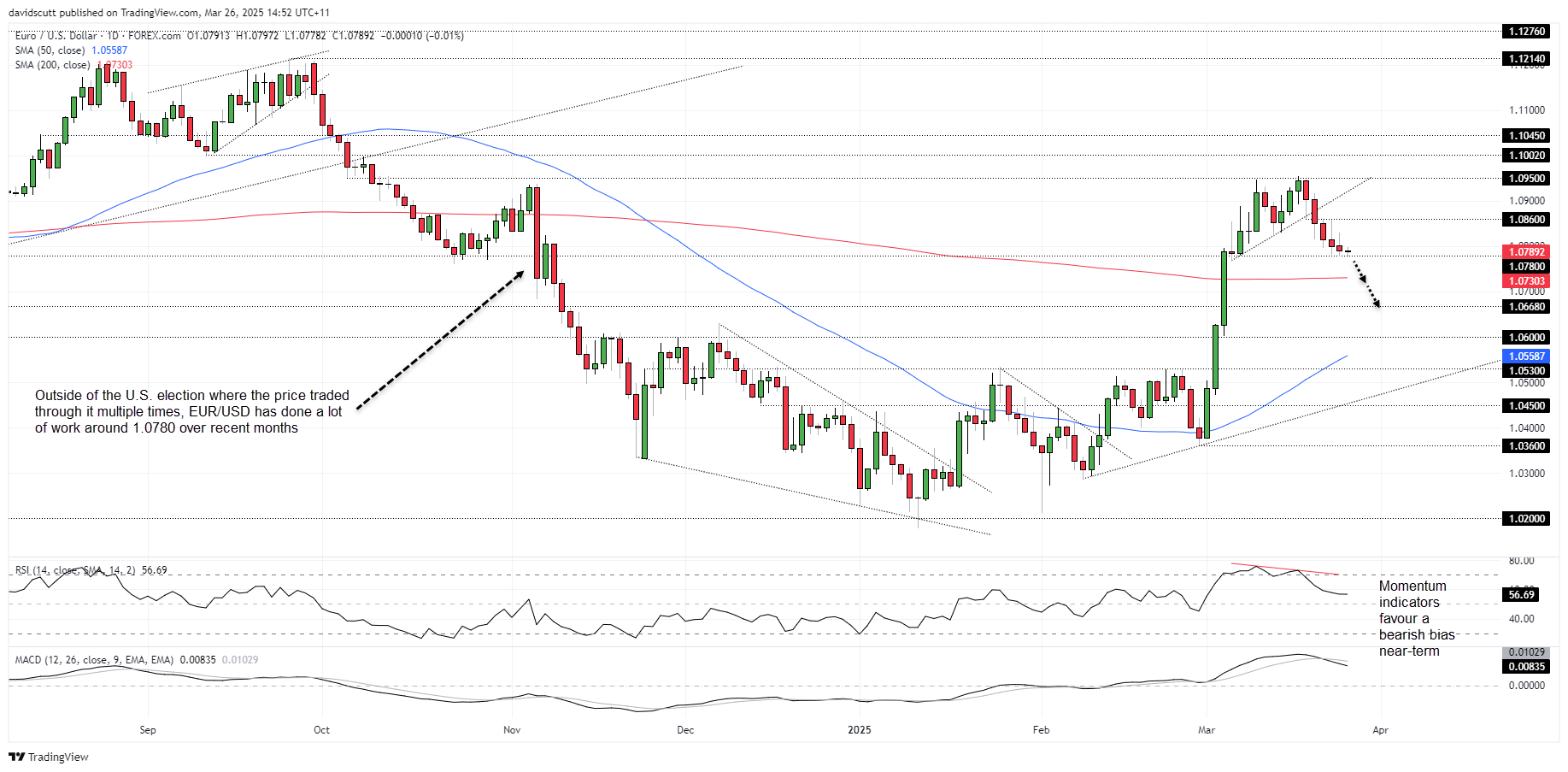- EUR/USD remains tightly correlated with benchmark German bund yields, sitting at a near-perfect 0.95 correlation in March.
- Traders use the euro to express views on European growth after Germany’s historic €1 trillion fiscal package.
- U.S. core PCE and spending data on Friday could be pivotal in the near term.
EUR/USD has effectively been a sentiment gauge for European growth and inflation expectations over the next decade in March, moving in near lockstep with German 10-year bond yields on a daily timeframe. With a light data calendar in Europe over the coming days, the euro’s direction may hinge on policymakers’ views on growth and inflation risks, particularly with U.S. tariffs on some European imports set to kick in from April 2.
Euro Reverts to Growth Proxy
It’s been hard to separate EUR/USD and German benchmark bund yields recently, with the rolling 20-day correlation coefficient sitting at 0.95—about as close to perfect as it gets. That relationship is far stronger than the one with US 10-year Treasury yields over the same period. You can see it visually in the left and middle panes of the chart below, with both rocketing higher in late February.
Navigating Event Risk
It will be interesting to see how ECB policymakers interpret the fiscal moves, especially with a packed speakers’ schedule ahead, headlined by President Christine Lagarde. The European Commission’s updated forecasts on Thursday will also provide insight into how growth and inflation expectations are shifting across the continent.
Source: TradingView
While euro price action has been heavily driven by European factors, its relationship with German-U.S. yield differentials across the curve in March makes it clear that U.S. economic data and events remain crucial for EUR/USD traders.
Source: TradingView
After a week dominated by sentiment surveys, traders will finally get a look at hard data, starting with durable goods orders on Wednesday. Event risk peaks on Friday with the Fed’s preferred inflation gauge—the core PCE deflator—released alongside income and spending data. If concerns about sputtering U.S. growth are to be put to bed, this could be the moment. Given the timing, Fed commentary on Friday could carry more weight than remarks earlier in the week.
Source: TradingView
EUR/USD Gravitates to Familiar Level
Source: TradingView
EUR/USD’s rally hit resistance at 1.0950 last week, partially unwinding this month’s gains. Right now, it’s sitting at 1.0780—a level that’s seen plenty of action in the past, reinforcing its importance in the days ahead.
Momentum indicators favour a near-term bearish bias, with RSI rolling over overbought levels and MACD crossing over from above. A clean break of 1.0780 could open the door to a test of the 200-day moving average, a level the price has shown only limited interest in recently. If that remains the case, bears may eye a return to 1.0668, where the pair bottomed midway through last year, with 1.0600 and 1.0530 other potential downside targets if the pullback deepens.
While the bias leans bearish, the preference is to wait for a break of 1.0780 before initiating positions, allowing for shorts to be established below the level with a stop above for protection. If 1.0780 holds, the setup flips—longs could be established above it with a stop beneath for protection. The first upside target would be 1.0860, followed by 1.0950.
